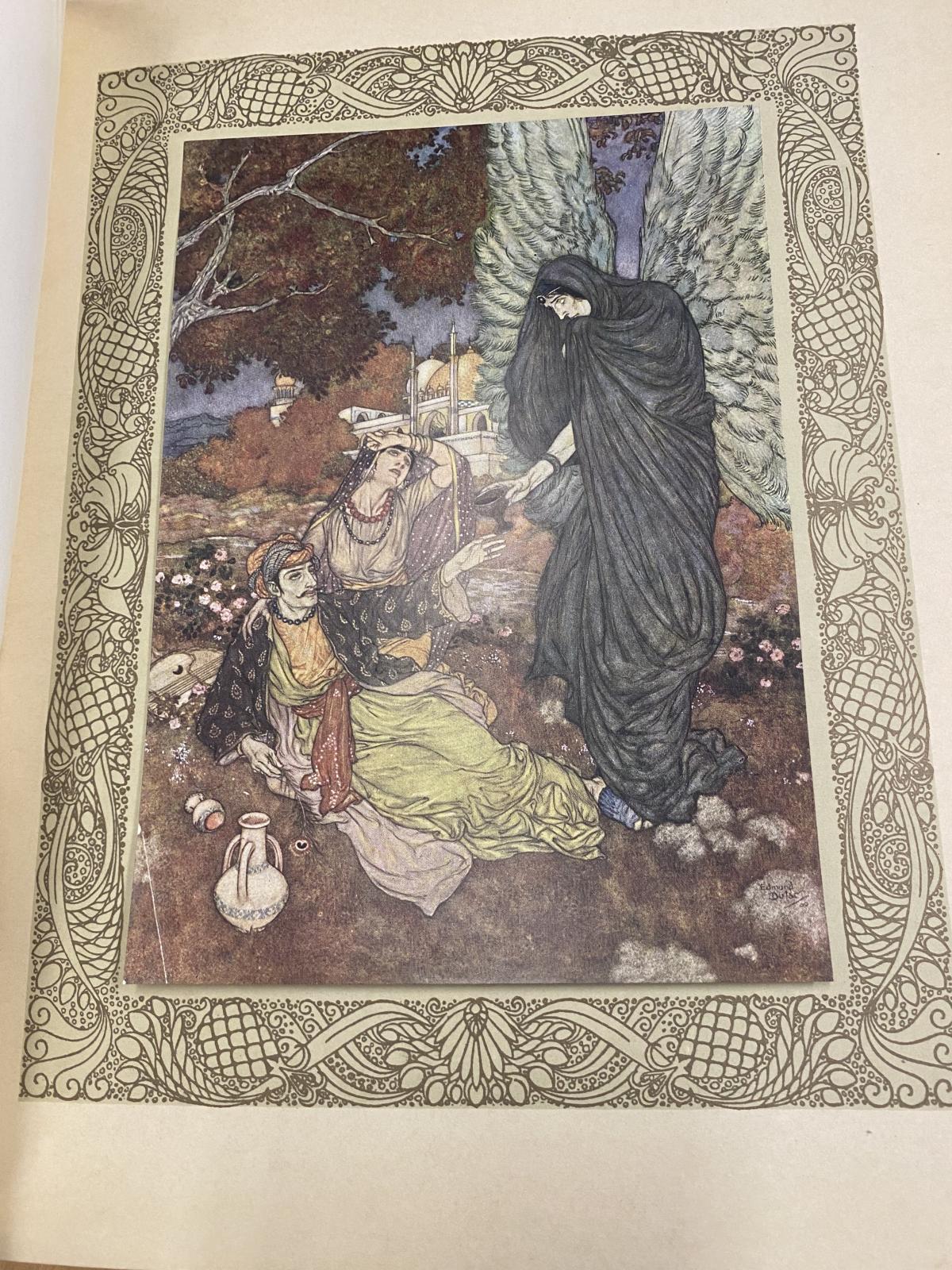A text can provide a whole new context for a book illustration and there is no greater example of such than an illustration with text that I have chosen to analyze from the 1909 edition of The Rubaiyat. The image in question corresponds to the following verse:
XLVII
And fear not lest Existence closing your Account, should lose, or know the type no more;
The Eternal Sáki from that Bowl has pour' d
Millions of Bubbles like us, and will pour.
—Rubaiyat, Fitzgerald, 1909.
Admittedly, the reason why I chose this image and verse in particular is because I thought that it was really interesting looking with the sickly looking people in the illustration (SEE FIGURE 1) and this cloaked, winged figure.
At first glance, the image looks like two beggars accepting a cup from a generous stranger. When one takes into consideration the text which accompanies the image, one realizes that this is actually not what the image is depicting at all. The illustration is that of the reaction to death that people may have.
This image depicts two people, a man and a woman, who appear to be gaunt as they lay on the ground and in front of them is a sickly looking figure with angel wings, wearing a black cloak. The winged figure hands a man a cup and the man reaches out for it, but the woman shows distress upon seeing the cup. The cloaked figure is meant to be death and the man accepting the cup that the cloaked figure offers him is meant to depict him embracing and accepting death (“And fear not lest Existence closing your Account, should lose, or know the type no more;”). By fearing “not lest Existence closing [their] account”, Death is telling the two people not to fear death as they will not cease to exist upon their deaths (which is a common fear that people have in regards to death) as we can see, the woman showing distress is her reacting negatively to death (as most of us would) and she is not accepting the cup.
How this image plays into the bigger picture of The Rubaiyat is that, it shows the various parts of life from an Islamic perspective and this part is death and how we can either choose to fear death or to embrace it as a way of entering into the afterlife because the afterlife is a means of immortality (“The Eternal Saki”). An elixir of life is a common and universal myth in which the mythical elixir would grant the drinker immortality and, this verse, by noting the “eternal saki” says that the afterlife is the true path to immortality. The stanza also notes that one should not fear death because it is inevitable and will happen to anyone and everyone “Millions of Bubbles like us, and will pour”. The “millions of bubbles'' represent the human population and when the text says that they “will pour”, it is basically saying that the entirety of the human population will all die eventually.
The man in the illustration appears to be of this mindset as he is seen willingly accepting the cup (and therefore death). The fact that the stanza uses the words “the type” when referring to existence, which implies that there is more than one life and when the stanza says “And fear not lest Existence closing your Account, should lose, or know the type no more;” That means one can no one has to carry the burden that life has brought on upon entering the afterlife.
This image and text really enhance each other because not only does the image enhance the text with a visual, but the text provides a whole new context for the image. Without the text, we can view this scene as the man happily taking the cup from the stranger and the woman not trusting this stranger (perhaps believing that he is trying to poison them) and therefore, showing distress at the cup. With the text, we get a beautiful and interesting interpretation of death and of our possible reactions to it.


